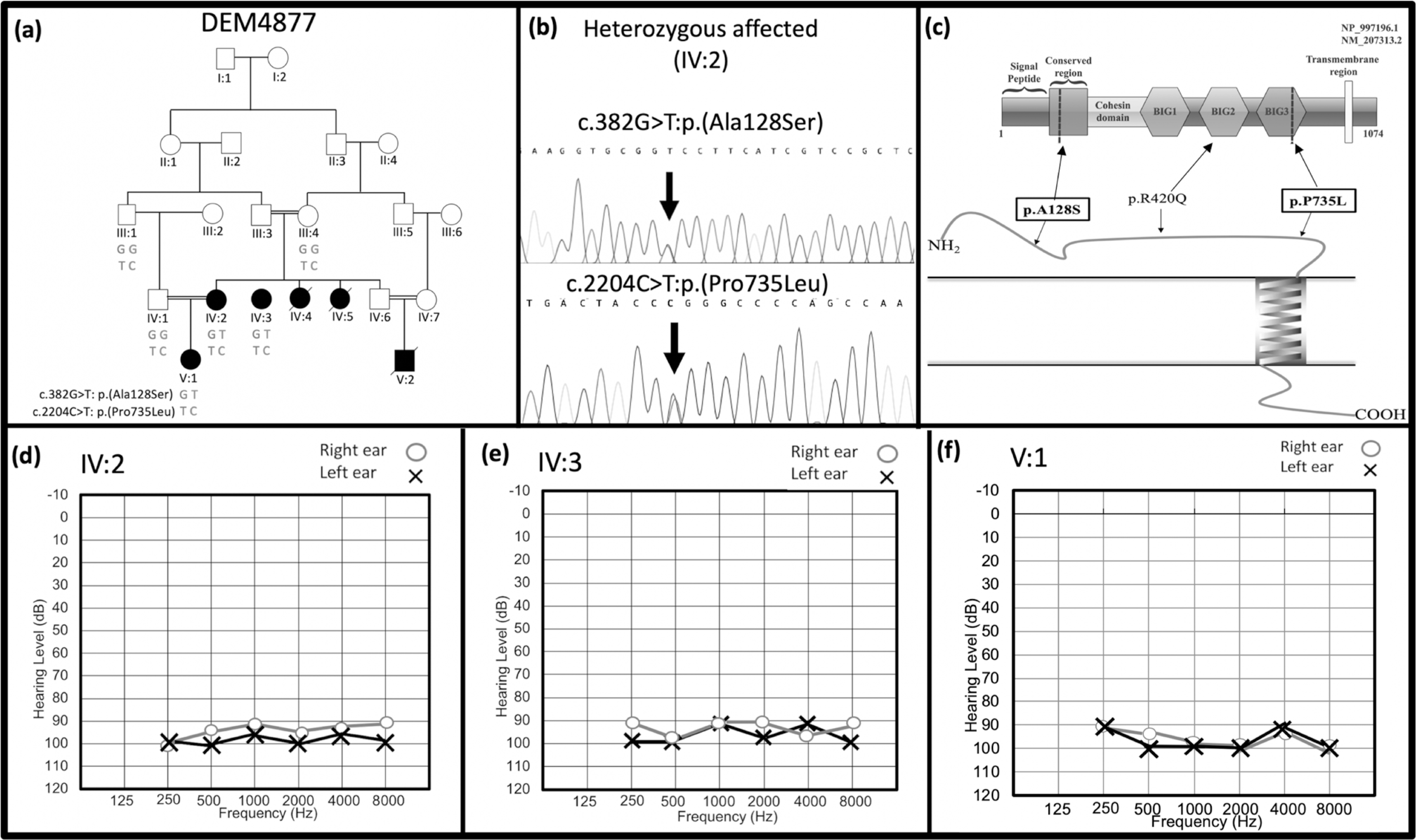Fig. 1.

Pedigree diagram, sequence chromatogram, and audiograms of family DEM4877. a DEM4877 pedigree drawings and segregations results for TMEM132E variants c.382G>T: p.(Ala128Ser) and c.2204C>T: p.(Pro735Leu). Squares represent males and circles females; filled symbols denote hearing impaired individuals and clear symbols unaffected family members. Double lines indicate consanguineous marriages. b Sequencing chromatogram of TMEM132E compound heterozygous variants c.382G>T: p.(Ala128Ser) (upper panel) and c.2204C>T: p.(Pro735Leu) (lower panel) of affected individual IV:2 from family DEM4877. c The domain architecture of the TMEM132 protein family (predicted by Sanchez-Pulido and Chris P. Ponting, 2018) (upper panel) and predicted transmembrane helices in TMEM132E (adapted from the result of TMHMM 2.0 analysis) (lower panel) showing the positions of previously reported one missense p.(Arg420Gln) variant mapped on BIG2 domain, a novel variants p.(Ala128Ser) located in the conserved region (CR) and another variant p.(Pro735Leu) lies in the BIG3 domain. The previously reported and new ARNSHI variants located in the extracellular region of TMEM132E. Variants in the box were identified in this study. d–f Displays the pure tone audiograms (bone conduction audiometry can be found in Supplementary Fig. 1) for affected individuals d IV:2, e IV:3, and f V:1, respectively
